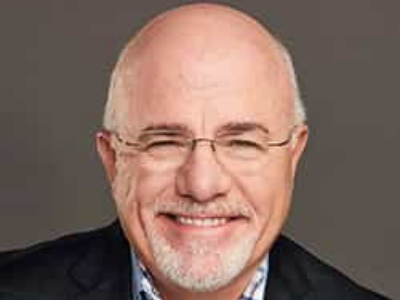The MacArthur Foundation's 'genius' fellows: The full 2025 class list
News > Business News

Audio By Carbonatix
11:08 AM on Wednesday, October 8
By THALIA BEATY
The John D. and Catherine T. MacArthur Foundation announced its 2025 class of fellows on Wednesday, a prize often called the “genius award.”
The MacArthur fellows receive a $800,000 prize paid out over five years that they can spend however they choose. The foundation selects fellows over the course of years and consider a wide range of recommendations. Fellows do not apply for the recognition or participate in any way in their selection.
The 2025 fellows are:
Ángel F. Adames Corraliza, 37, Madison, Wisconsin, an atmospheric scientist whose research deepened knowledge about what drives weather patterns in the tropics.
Matt Black, 55, Exeter, California, a photographer whose black and white images investigate poverty and inequality in the United States.
Garrett Bradley, 39, New Orleans, a filmmaker who leverages many types of material, including archival and personal footage, to tell almost lost and intimate stories, especially about the lives of Black Americans.
Heather Christian, 44, Beacon, New York, a composer, lyricist, playwright and vocalist who creates complex, immersive musical theater performances that interweave the sacred and mundane.
Nabarun Dasgupta, 46, Chapel Hill, North Carolina, an epidemiologist who helped create tools to identify unregulated substances in street drugs and designed other harm reduction interventions.
Kristina Douglass, 41, New York, an archaeologist whose research revealed new understandings of Indigenous conservation practices in places sensitive to climate variability.
Kareem El-Badry, 31, Pasadena, California, an astrophysicist who developed new approaches to understanding existing datasets that have revealed new knowledge about how stars form and interact.
Jeremy Frey, 46, Eddington, Maine, an artist whose mastery of Wabanaki basket weaving both carries on traditional practices and finds new possibilities in the materials and techniques.
Hahrie Han, 50, Baltimore, a political scientist whose research illuminated what helps people participate in civic life and how to help them connect across differences to solve collective problems.
Tonika Lewis Johnson, 45, Chicago, a photographer and activist who created participatory projects that reveal the consequences and legacy of segregation in her neighborhood of Englewood on the city's South Side.
Ieva Jusionyte, 41, Providence, Rhode Island, a cultural anthropologist whose diverse ethnographies investigate the ethical and practical issues that national border policies create for workers and communities who live in border regions.
Toby Kiers, 49, Amsterdam, an evolutionary biologist whose research helped document how plants, microbes and fungi cooperate to trade the resources that each need to survive.
Jason McLellan, 44, Austin, Texas, a structural biologist whose research into viral protein structures helped advance the understanding of viruses and helped to develop new vaccines.
Tuan Andrew Nguyen, 49, Ho Chi Minh City, Vietnam, a multidisciplinary artist whose projects in film and sculpture draw on personal testimonies and community archives to document and heal from histories of war and displacement.
Tommy Orange, 43, Oakland, California, a fiction writer whose books illuminated the experiences past and present of Native Americans in the Oakland area.
Margaret Wickens Pearce, 60, Rockland, Maine, a cartographer whose maps document the relationships of Indigenous people in North America to their land and that narrate histories, incorporate knowledge and detail the ongoing dispossession of Native people.
Sébastien Philippe, 38, Madison, Wisconsin, a nuclear security specialist whose research revealed that past nuclear testing by France and the U.S. exposed many more people to radiation than was previously documented.
Gala Porras-Kim, 40, Los Angeles and London, an interdisciplinary artist whose exploration of museum collections challenged conventions of curation and often highlight what is lost or unknown about cultural artifacts.
Teresa Puthussery, 46, Berkeley, California, a neurobiologist and optometrist who identified a type of cell in the retina that helps clarify how humans process visual information.
Craig Taborn, 55, Brooklyn, New York, a musician and composer known for his improvisations and collaborations and whose performances reveal the full range of the piano's capacity as an instrument.
William Tarpeh, 35, Stanford, California, a chemical engineer who developed techniques to extract valuable minerals from wastewater that can be turned into fertilizers or cleaning products.
Lauren K. Williams, 47, Cambridge, Massachusetts, a mathematician whose research is in algebraic combinatorics and also contributed to solving problems in other areas through interdisciplinary collaborations.
___
Associated Press coverage of philanthropy and nonprofits receives support through the AP’s collaboration with The Conversation US, with funding from Lilly Endowment Inc. The AP is solely responsible for this content. For all of AP’s philanthropy coverage, visit https://apnews.com/hub/philanthropy.








